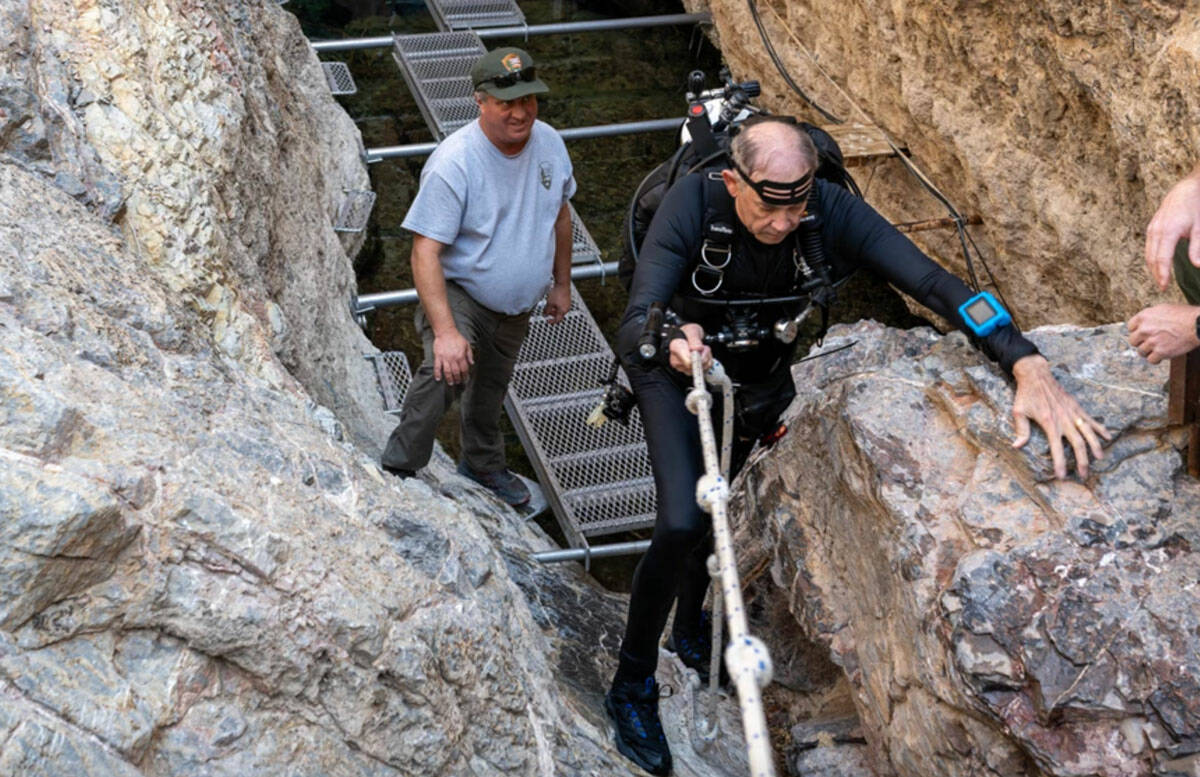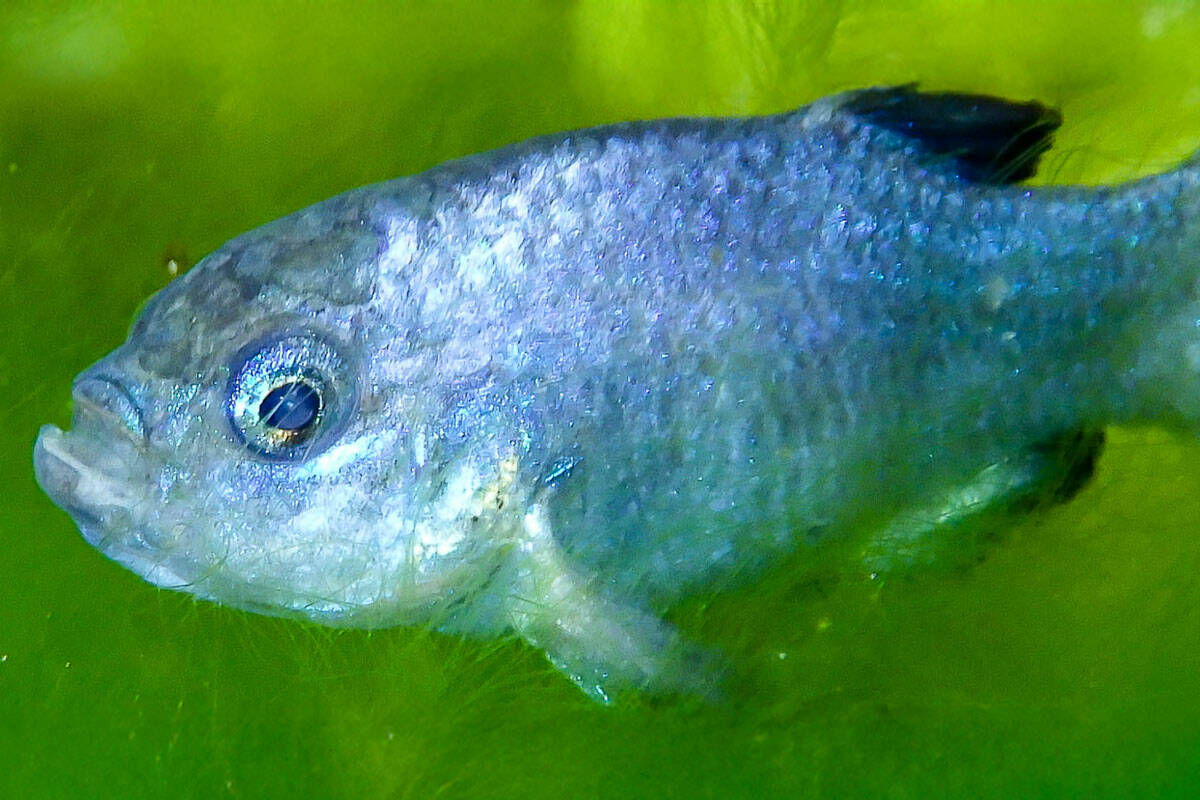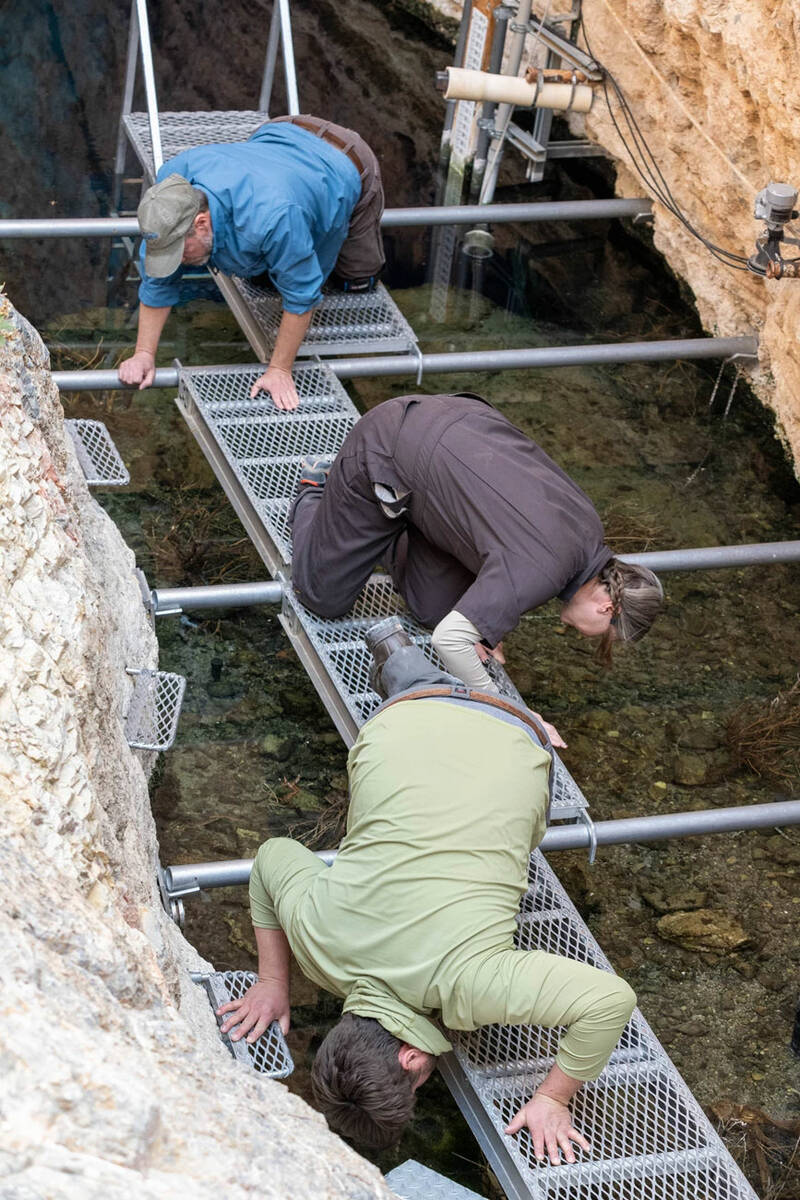Earthquakes can’t stifle progress of tiny Devils Hole pupfish, feds say
The seemingly sequestered, deep-blue swimming hole that the world’s rarest fish calls home isn’t immune to shifts in the tectonic plates. Luckily, scientists have been planning for years.
Earthquakes — one in December and another in February — are part of the reason that National Park Service scientists recorded only 38 fish in their semiannual survey of Devils Hole pupfish, the agency said in a news release on Tuesday. Last spring, that number was much higher, at 191 fish.
“The present size at near-record lows deserves our serious attention,” Michael Schwemm, a U.S. Fish and Wildlife Service fish biologist, said in a statement.
For the first time, scientists have successfully introduced into the wild 19 fish raised in captivity at the nearby Ash Meadows Fish Conservation Facility.
The pupfish species, found only in a pool called Devils Hole near Ash Meadows National Wildlife Refuge, is protected by the federal Endangered Species Act, as well as a 1976 U.S. Supreme Court decision that stifled attempts at groundwater pumping in the area.
Since 1972, scientists have conducted a semiannual survey of the fish in which divers go into the pool and count them, one by one.
Bracing for low numbers
Though the 38 number is a significant departure from a record high number recorded in 2022, it’s still above the all-time low of 35 fish recorded in 2013.
The long years spent capturing pupfish eggs and raising fish in captivity have paid off, offering a back-up plan if Mother Nature wipes out the fish that are left in the wild.
“The historic transfer of captive-raised fish from the backup population in Ash Meadows Fish Conservation Facility underscores the importance of the dedicated staff and their state-of the-art equipment,” Death Valley National Park Superintendent Mike Reynolds said in a statement.
Because of the earthquakes, waters moved algae and fish eggs off a shallow shelf at the cavern’s entrance that normally provides a critical food and spawning habitat. Scientists were able to lean on conservation planning to glean how much to supplement the fish’s diet until algae can regrow.
And what scientists are doing is working, said Brandon Senger, the Nevada Department of Wildlife’s supervising fisheries biologist.
“The fish were in good body condition and active throughout Devils Hole,” he said in a statement. “Seeing fish exhibiting spawning behavior was really encouraging, as was the increase in algal growth.”
Contact Alan Halaly at ahalaly@reviewjournal.com. Follow @AlanHalaly on X.




















